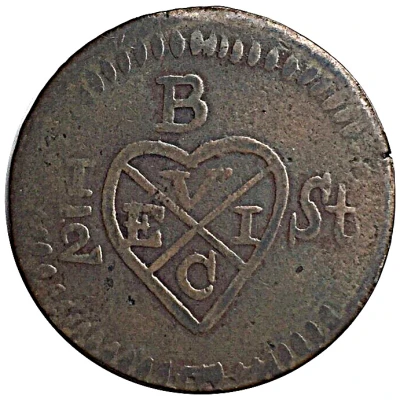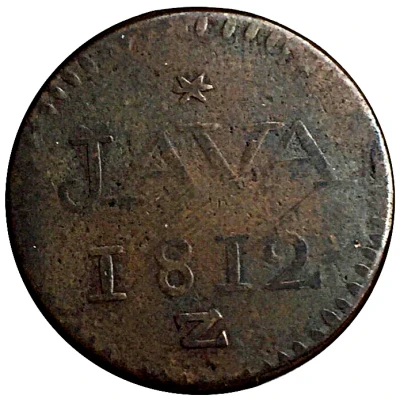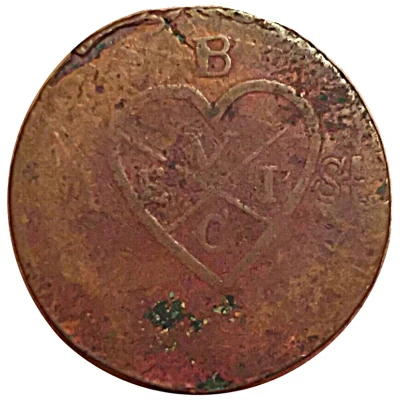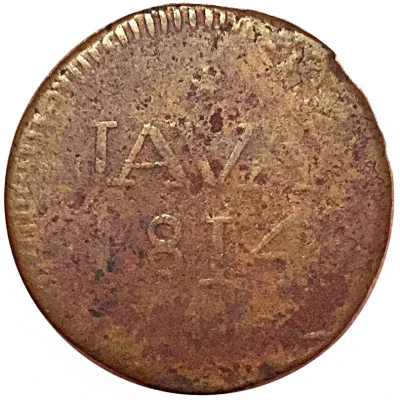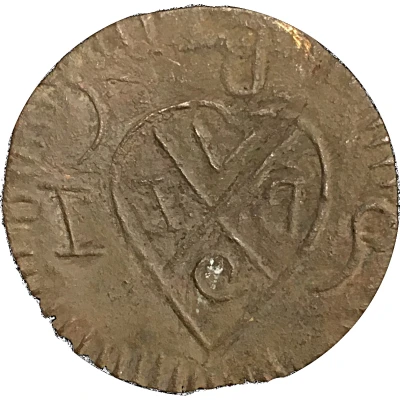
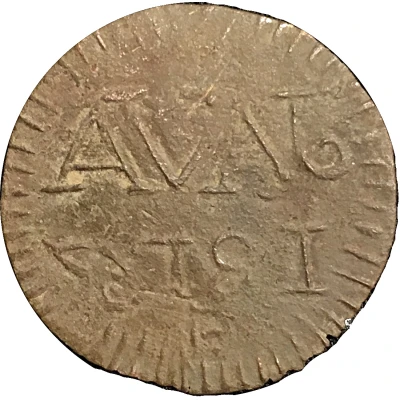

© TuckHard (CC BY)
½ Stuiver Tin imitation
| Tin | 0.99 g | - |
| Issuer | Java (British East Indies) |
|---|---|
| Type | Standard circulation coin |
| Years | 1811-1815 |
| Value | ½ Stuiver (1⁄60) |
| Currency | Rupee (1811-1817) |
| Composition | Tin |
| Weight | 0.99 g |
| Shape | Round |
| Demonetized | Yes |
| Updated | 2024-10-04 |
| Numista | N#169214 |
|---|---|
| Rarity index | 95% |
Reverse
This prominent reverse shows a nicely mirrored crude imitation of an 1813 ½ Stuiver. The "2" at the bottom is actually a reversed crude Z.
Script: Latin
Lettering:
AVAJ
3181
2
Retrograde (mirrored) script of
JAVA
1813
Z
Comment
These coins were produced and circulated locally in Java, and possibly in Sumatra and copied the design of the then-circulating ½ Stuiver during British Occupation of Java. Many of the imitations, or contemporary counterfeits, do not feature such strong crudeness and amateurishness. Of a collection of around 35, only around half had any major mirrored or misplaced characters while the rest simply featured crude and hand-carved lettering. The coin shown is the only one that revealed the vertically swapped fraction, the "2/1" rather than the common "1/2". All the imitations weigh in to mere fractions of the supposed 5 g. standard. It is likely that there are some "impossible dates" where it is marked to outside of the 1811-1815 official minting.Interesting fact
One interesting fact about the ½ Stuiver coin from Java (British East Indies) made of Tin is that it was used as a form of currency during the British occupation of Java in the early 19th century. Despite being made of tin, a relatively inexpensive metal, the coin was still considered valuable and widely used in trade and commerce. This highlights the resourcefulness and adaptability of the people of Java during a time of occupation and economic change.
